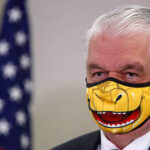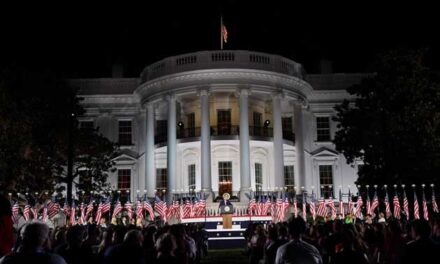
Si Vis Pacem, Parabellum

Reno Gazette Journal January 12, 2020
On January 2nd, a U.S. drone strike targeted and killed Qassam Soleimani, the mastermind behind hundreds of attacks against American Servicemen and American interests in Iraq and other countries in the Middle East.
Here’s the recent sequence of events that resulted in his killing according to Reuters: In early-October, Soleimani moves Katushya rockets and shoulder-fired missiles into Iraq. In mid-October, Soleimani meets with Iraqi militias in Baghdad and orders them to step up attacks against U.S. targets. These militias use aerial footage from drones to pick U.S. targets. Over the next several weeks, attacks on bases hosting U.S. troops becomes increasingly sophisticated. On December 9, Katushya rockets strike a base near Baghdad airport. On December 27, 20 rockets were fired at a base in Kirkuk killing a U.S. contractor and wounding four American servicemen. U.S. launches air strikes on December 29 killing 25 militia fighters. On December 31st, militia forces storm the U.S. embassy in Baghdad and write “Soleimani is our leader” on different parts of the embassy. On January 2nd, Soleimani lands in Baghdad and is killed by a U.S. drone strike.
Over the past several decades, Soleimani has coordinated the activities of terrorist organizations which act as surrogates for Iran. This includes the Houthis in Yemen, Hezbollah in Lebanon, Kataib Hezbollah in Iraq, Hamas and Islamic Jihad in Palestine, just to name a few. Together, these terrorist organizations have killed over 600 American personnel and injured or maimed hundreds more. General Odierno, Chief of Staff of the Army under President Obama, said in an interview in 2015 that a majority of the American casualties in Iraq from 2008-2010 was caused by Soleimani (link to video).
Soleimani has been sanctioned often. In 2005, Soleimani was designated a terrorist by the U.S. In 2007, the UN Security Council banned his travel and froze his assets and the Treasury Department sanctioned him. In 2011, he was sanctioned both by the U.S. and the EU for his actions in Syria. In 2011, the Treasury Department sanctioned him again for plotting to assassinate Saudi Ambassador to the U.S. at a DC restaurant. His rap sheet is much longer but the above should give you a flavor.
The broader issue is Iran’s continued bad behavior. In 2019 alone, Iran hit 6 ships, shot down a U.S. drone, hit Saudi oil facilities, captured a British vessel and conducted joint exercises with China and Russia. Iran routinely jams GPS signals forcing ships to stray, then seizes the ships and captures soldiers. 15 British sailors were held for 13 days in 2007. Ten U.S. Navy soldiers including one woman were apprehended, forced to apologize, and paraded in front of State TV. Upon their negotiated release, then Secretary of State John Kerry thanked Iran and called Iran’s response “swift and appropriate”.
One final point: Any country that intends to harm Americans should think long and hard before doing so. When Palestinian terrorists killed American Klinghoffer in the Achille Lauro incident in 1985, President Reagan surrounded the plane carrying the terrorists to safety with F-14 Tomcats and forced it to land. In 2020, President Trump reacted with strength on Iran, much like President Reagan reacted in 1985. Democrats, who called President Reagan “cowboy” and “redneck” then, are accusing President Trump of reckless behavior today. Weakness is provocative, and not having a proportionate response to terrorists is a losing strategy. Terrorists with American blood on their hands should never roam the planet freely. There is an old Latin adage which aptly summarizes the current situation: Si vis pacem, para bellum. English translation: If you want peace, prepare for war.
































Recent Comments